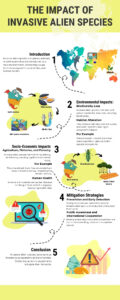Assess the National Clean Air Programme’s (NCAP) results. In what ways might Mission Life revitalize the NCAP to tackle the problem of air pollution? (Answer in 150 words) (Answer in 150 words)
Model Answer Introduction Every year, approximately 11.2 billion tonnes of solid waste are generated globally, contributing to about 5% of global greenhouse gas emissions due to the decay of organic waste (World Bank, 2018). The increasing volume of waste underscores the urgent need for effective diRead more
Model Answer
Introduction
Every year, approximately 11.2 billion tonnes of solid waste are generated globally, contributing to about 5% of global greenhouse gas emissions due to the decay of organic waste (World Bank, 2018). The increasing volume of waste underscores the urgent need for effective disposal solutions and the safe removal of hazardous substances from our environment.
Impediments in Disposing of Discarded Solid Wastes
Lack of Awareness and Education
A significant barrier to effective waste management is the lack of public awareness regarding proper disposal practices. Many individuals do not recognize the environmental impacts of improper waste disposal or the benefits of recycling (UNEP, 2021).
Inadequate Infrastructure
Insufficient waste management infrastructure poses a critical challenge. Many regions lack the facilities necessary for effective waste segregation, collection, and treatment. The scarcity of landfills, recycling centers, and waste treatment plants severely limits the ability to manage solid waste efficiently (OECD, 2020).
Financial Constraints
Financial limitations greatly hinder waste management efforts. Many municipalities, especially in developing countries, struggle to allocate sufficient funds for waste management initiatives, resulting in inadequate collection and disposal services (World Bank, 2018).
Limited Institutional Capacity
Weak governance and a lack of coordination among government agencies further impede waste management. Ineffective policies and limited institutional capacity can prevent the implementation and enforcement of waste management regulations (UNEP, 2021).
Removing Toxic Wastes Safely from the Environment
Identification and Assessment
The first step in managing toxic waste is to identify contaminated sites. Comprehensive assessments help determine the extent of contamination and identify hazardous substances.
Risk Analysis and Management
Subsequent risk analyses evaluate the potential dangers posed by toxic wastes, prioritizing areas for cleanup and determining suitable remediation techniques (EPA, 2020).
Cleanup and Remediation
Cleanup involves various methods, including excavation, soil washing, and bioremediation. Employing specialized equipment and trained personnel ensures the safe handling of toxic materials.
Monitoring and Follow-up
Post-cleanup, continuous monitoring is essential to verify the effectiveness of remediation efforts and ensure environmental safety.
Public Awareness and Participation
Engaging communities in education and decision-making processes is vital for addressing toxic waste issues effectively (UNEP, 2021).
Conclusion
To overcome the challenges of waste disposal, comprehensive strategies that promote waste reduction, recycling, and advanced treatment technologies are essential. Implementing proper disposal methods is crucial for the safe removal of toxic waste from our environment.
See less

Ministry of Environment, Forest and Climate Change (MoEFCC) launched National Clean Air Programme (NCAP) in January, 2019 with an aim to improve air quality in 131 cities in 24 States and UTs by engaging all stakeholders. The programme envisages to achieve reductions up to 40% or achievement of NatiRead more
Ministry of Environment, Forest and Climate Change (MoEFCC) launched National Clean Air Programme (NCAP) in January, 2019 with an aim to improve air quality in 131 cities in 24 States and UTs by engaging all stakeholders. The programme envisages to achieve reductions up to 40% or achievement of National Ambient Air Quality Standards for Particulate Matter10 (PM 10) concentrations by 2025-26.
See lessMeasures taken by the government to improve air quality-
1. Reducing vehicular emissions by introducing schemes like Faster Adoption and Manufacturing of Electric vehicles, enhancing public transport by introducing metro rails connecting more cities.
2.Tightening emission norms for thermal power plants, installation of online continuous emission monitoring devices and ban on use of pet coke and furnace oil in NCR, and ban on use of pet coke in processes in cement plants, lime kilns and calcium carbide manufacturing units.
3.Public Grievances and Response System (PGRS) is developed under NCAP and Air quality monitoring cell has been constituted across the country in NCAP Cities.
Outcomes of the national Clean Air Programme-
A recent study conducted by the Climate Trends and Respirer Living Sciences reveals majority of the cities are far from the clean air targets of the NCAP.
◻ There seems to be a mixed progress among cities, while some of them like Varanasi ,Agra shows a decline others like Delhi reported marginal decline or sometimes even increased pollution loads.
◻ Lack of ambient Air Quality Monitoring systems in cities – Delhi and Mumbai have several such stations while others only have a hand full.
◻ The indo-gangetic plain remains highly vulnerable to elevated particulate matter concentrations (18 out of 20 most polluted cities).
◻ The varying results can be attributed to different factors like geographical locations, diverse emission sources and even meteorological factors.
Mission Lifestyle for Environment- the objective of this mission is to promote and encourage a sustainable and environmentally conscious way of living.
Mission Life can help to revitalize the NCAP in the following manner
1.Encourage people to use public transport systems in metro cities to avoid congestion and the resulting pollution due to individual vehicles.
2.Local bodies should persuade the residents to hand over the plastic waste instead of incinerating them and should heavily fine those who don’t comply.
3.Promotion and adoption of advanced Electric Vehicle technology especially in public transport systems through subsidies and benefits .
4.Systematically phasing out coal based thermal plants and giving way to Renewable energy generation.
5.Persuading manufacturers to produce more durable , recyclable plastic containers to ensure that they are not easily damaged and casted out as waste.
6. Spreading awareness among farmers about the environmental defects of stubble burning and suggest them viable alternative means.
Results suggest that the NCAP needs a makeover , region specific planning and Mission life with its pro planet people approach can help reinvigorate it.